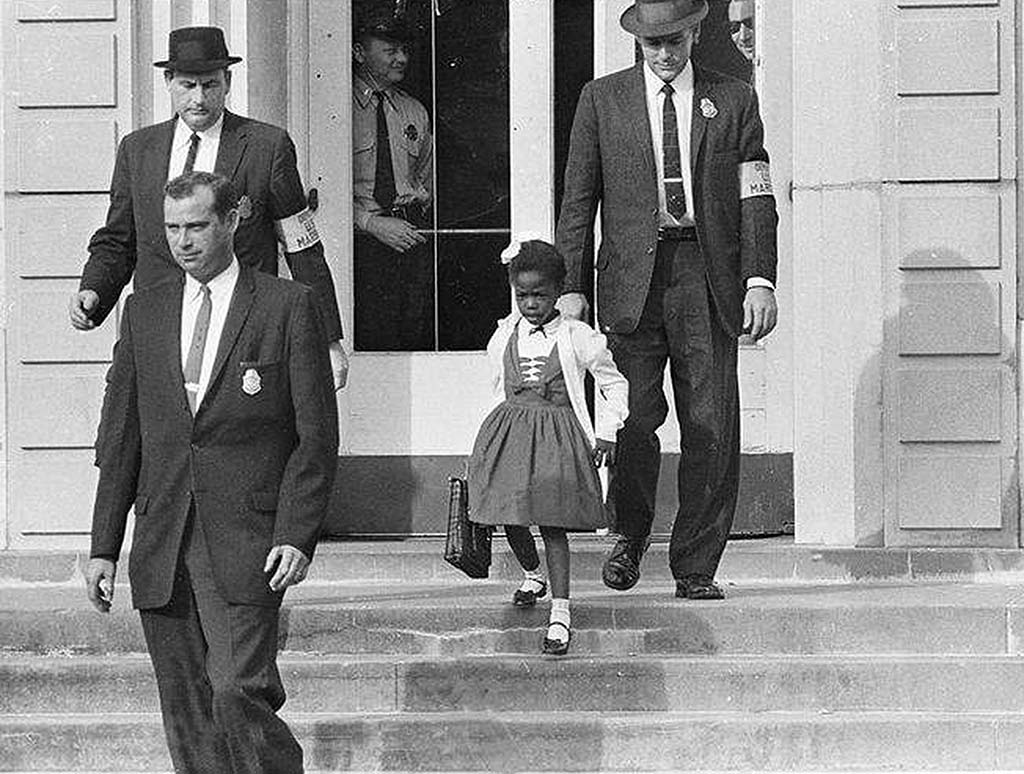This entry is for juvenile audiences. To see the full version of this entry, click here.
Ruby Bridges integrated a formerly all-white elementary school in New Orleans, Louisiana, when she was six years old. Four armed Federal marshals had to escort her to school every day to keep her safe.
Why are they important to know about:
The year Ruby was born (1954), the U.S. Supreme Court ruled that racially segregated public schools were unconstitutional. That case is called Brown v. Board of Education. Six years later, elementary schools in the South were still segregated.
Details of the life of the person:
Ruby Bridges was six years old when she became famous. In 1960, she started first grade at William Frantz Public School in New Orleans, Louisiana. She was the first child to integrate a previously all-white school in New Orleans. Two years after Brown v. Board of Education, a federal judge ordered New Orleans to integrate. It took the city four more years. Ruby was one of only a few students chosen to integrate William Frantz School, but she was the only one who did. People threatened violence, so on her first day, Ruby had to be escorted into the school by four Federal marshals. Protesters and the media were waiting outside. Ruby spent her entire first day in the principal’s office. Afterward, she was the only student in her classroom for the rest of the school year. Barbara Henry, a white teacher new to the school, taught Ruby, and only Ruby, for all of first grade.
Because it was considered too dangerous, Ruby could not go to recess or eat in the cafeteria. For the rest of the year, she went to school with the Federal marshals or by taxi. Ruby’s family also suffered. Her father was fired from his job, her mother was denied shopping privileges at the local store, and her grandparents were evicted from their farm. Luckily, people from all over the country sent money and gifts to help the family. Former First Lady Eleanor Roosevelt wrote Ruby a letter of support. Ruby entered second grade the next year. The protesters were gone and all the classes were integrated. Novelist John Steinbeck wrote about her and those who had integrated another New Orleans school in Travels with Charley. His book inspired the artist Norman Rockwell to create a painting of her for Look magazine. Ruby Bridges graduated from an integrated high school in New Orleans where she still lives and became a travel agent. She and her husband, Malcolm Hall, have four sons. She also became the parent liaison at William Frantz School.
Their lasting impact:
Ruby’s courageous act led to the desegregation of public elementary schools in New Orleans and in the South.
What we learned from them:
Although she was only six years old, Ruby Bridges exhibited strength and courage. She demonstrated that even young children are able to bring about change and have a lasting impact on the country and the world.


